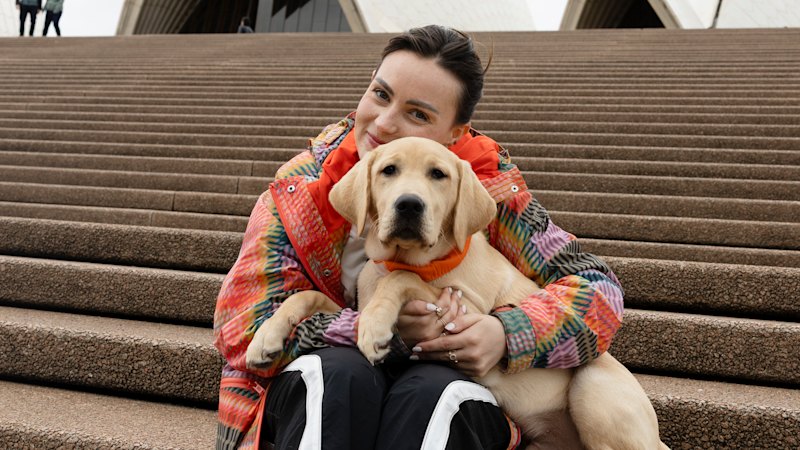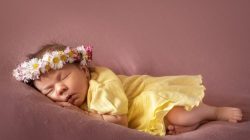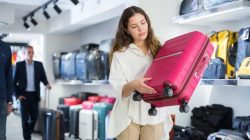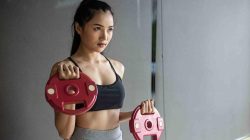At fourteen, everyone experiences significant changes, yet for Molly Burke, this age marked a profound transformation in her journey. Diagnosed with retinitis pigmentosa when she was just four years old—a condition leading to limited eyesight—she experienced substantial loss of her vision around the time she turned fourteen.
I faced immense difficulties. All my friendships fell apart, and I endured severe bullying, depression, and thoughts of suicide… Isn’t 14 a crucial developmental age for anyone?

At 31 years old, Burke has emerged as a pioneer for individuals with disabilities in the fields of fashion and beauty.
Tolong support kita ya,
Cukup klik ini aja: https://indonesiacrowd.com/support-bonus/
She became the first visually impaired content creator to reach 1 million followers on social platforms, and currently boasts over 3 million subscribers across YouTube and TikTok combined. Her posts cover topics ranging from managing menstruation to reviewing favorite beauty items. Notably, she has addressed audiences at events like the United Nations and the World Economic Forum, collaborated with firms including Google, and in 2024, was recognized as one of
Forbes
30 under 30.
This marks the Canadian’s initial trip to Australia, where they are welcomed by Guide Dogs Australia for their first-ever Boundless Beauty Summit, focusing on the beauty sector and inclusive design.
During the initial years following her loss of vision, the internet—specifically YouTube—served as a lifeline.
So many folks see beauty influencers and react with a eye-roll, thinking ‘These are merely young women who are narcissistic and fixated solely on their appearance.’
[However], these girls transformed my life. They assisted in restoring my confidence, rebuilding my self-worth, and reclaiming a skill I thought was lost.
It’s a common misconception that people experiencing low vision or blindness don’t wear make-up or care about beauty. But for Burke, losing her sight simply changed how she interacted with fashion and beauty.
“I couldn’t see mannequins any more. I couldn’t see in store windows. I couldn’t flip through magazines or swatch lipsticks on the back of my own hand.
But losing my sight didn’t alter who I am. It just changed the way I accomplish things.
It transpires that platforms like YouTube, followed by TikTok, are quite user-friendly. Those who have viewed fashion or beauty influencers understand how meticulously these creators describe elements such as the fabric of an outfit or the precise hue of lip color in their content.
“I essentially got all the information I required,” states Burke, who gradually learned how to accomplish tasks like applying her mascara or selecting the appropriate foundation shade for her complexion.
Individuals close to Burke began to pick up on the changes.
Girls at school would stop me and say things like, ‘Which eyeshadow are you using? I absolutely adore it!’ or, ‘Can you offer me some style tips?’
They were seeking input from someone who was blind, whom traditionally we might consider to have little insight in that discussion, and I began forming new friendships because of this.
Nevertheless, Burke did not have positive role models who mirrored her own experiences.
“She mentions not coming across an instance of a successful, content, flourishing blind individual.”
By the age of 20, Burke made up his mind to take that step and launched his own YouTube channel.

Although diversity and sustainability have turned into popular terms recently, the beauty sector has lagged behind in embracing inclusive design – only 4 percent of beauty and personal care companies accommodate individuals with disabilities, as indicated by research conducted by Procter and Gamble.
“Traditionally, it has been evident that the beauty sector has not shown concern for individuals with disabilities,” she states.
Although Burke can read Braille, she represents only a small fraction of visually impaired individuals who use this method. She emphasizes that universal design, not just accessible design, is crucial.
For example, the hair care brand Herbal Essences has added embossed dots and stripes to its packaging, allowing customers to distinguish between similar-looking bottles of shampoo and conditioner.
These enhancements apply universally as they enhance everybody’s experience.
Even though major corporations might view these alterations as expensive or overly specialized, Burke emphasizes that it actually benefits their bottom line to implement such changes.
Creating designs for individuals with disabilities isn’t just about doing good; it’s also a smart business strategy.
Twenty percent of Australians reside with a disability, accounting for $40 billion in discretionary spending.
Research from Circana
discovered that brands embracing inclusivity are expanding at a rate 1.5 times quicker than those that do not.
Even with her achievements, Burke encounters constant reminders that society wasn’t designed for individuals like herself. For instance, using public restrooms remains a challenge that many take for granted.
Living with blindness can be challenging until the world becomes more inclusive. This was an important realization for me. For much of my life, I believed that if I worked diligently enough, I could reach a stage where my visual impairment wouldn’t make a difference.
But it makes no difference whether I have thousands of followers, earn lots of money, or achieve great success. If the world remains inaccessible to me, it still poses challenges.
That hit home earlier this year when Burke was forced to evacuate her Los Angeles home during the city’s devastating wildfires.
It wasn’t until I was secure that I [realized] society hadn’t truly implemented safeguards for my community.
Individuals with disabilities are
two to four times as likely
to perish or get hurt in a natural disaster compared to the general populace. Burke advocates for increased education and policies aimed at safeguarding them.
Although Burke has made great strides since she was that 14-year-old girl with grand aspirations, her path to embracing herself has not followed a straightforward course.
“As we get older, our bodies transform, our faces evolve, and there’s immense expectations and pressures. Being based in Los Angeles within the entertainment industry, I encounter various remarks about my looks frequently. It isn’t simple for a 31-year-old woman to witness her own transformation without actually seeing it unfold,” she explains.
Maximize your well-being in areas such as health, relationships, fitness, and nutrition with us.
Live Well newsletter
.
Receive it via email
every Monday
.





